Sudan is the largest country in Africa, covering over 2.5million sq. km. Southern Sudan is hot humid and tropical while northern and western Sudan are vast desolate areas of stunning desert. Due to the war in south and eastern Sudan, travel is restricted and getting a Sudanese visa is extremely difficult and for many impossible. On entering Sudan, one is also required to register and get a travel permit in order to drive north through to Egypt. The Sudanese people are known for their generous hospitality and friendliness and the Nubian people of northern Sudan are some of the most amiable people we had met on our trip. We were asked two questions when crossing at the Sudan border. Are we from Denmark and what did we think of Sudan? The answer to the first question was simple, the second more complicated. My mind was racing as to what might be the politically correct answer. I replied, “I have only been here for 10 minutes, so I had not formed any impressions yet.” He smiled and informed me that Sudan was a very safe country except for the Darfur region, where the problems were caused by the presence of too many foreign armies. I breathed a sigh of relief as he signed the carnet, stamped our passports and we were on our way. It was too late to travel to the next town of Gedaref so we bushed camped at the border
Enlarge

Adventurouspirits
One of the truckers waiting fro the border to open pointed out to me that the cruiser was leaking oil. I crawled underneath to find that the rear differential problem that I thought had been repaired in Uganda was now even worse. The oil leak was worse and their was three hundred mile of tough driving before we get to Gedaref and find a mechanic. The road passed through deserted scrub like desert landscape and I stopped every 50 kms or so to see if their was still oil leaking out. That was a good thing since that meant there was still oil in the differential. After a tense 6 hr drive Gedaref loomed on the horizon, we had made it.
Enlarge
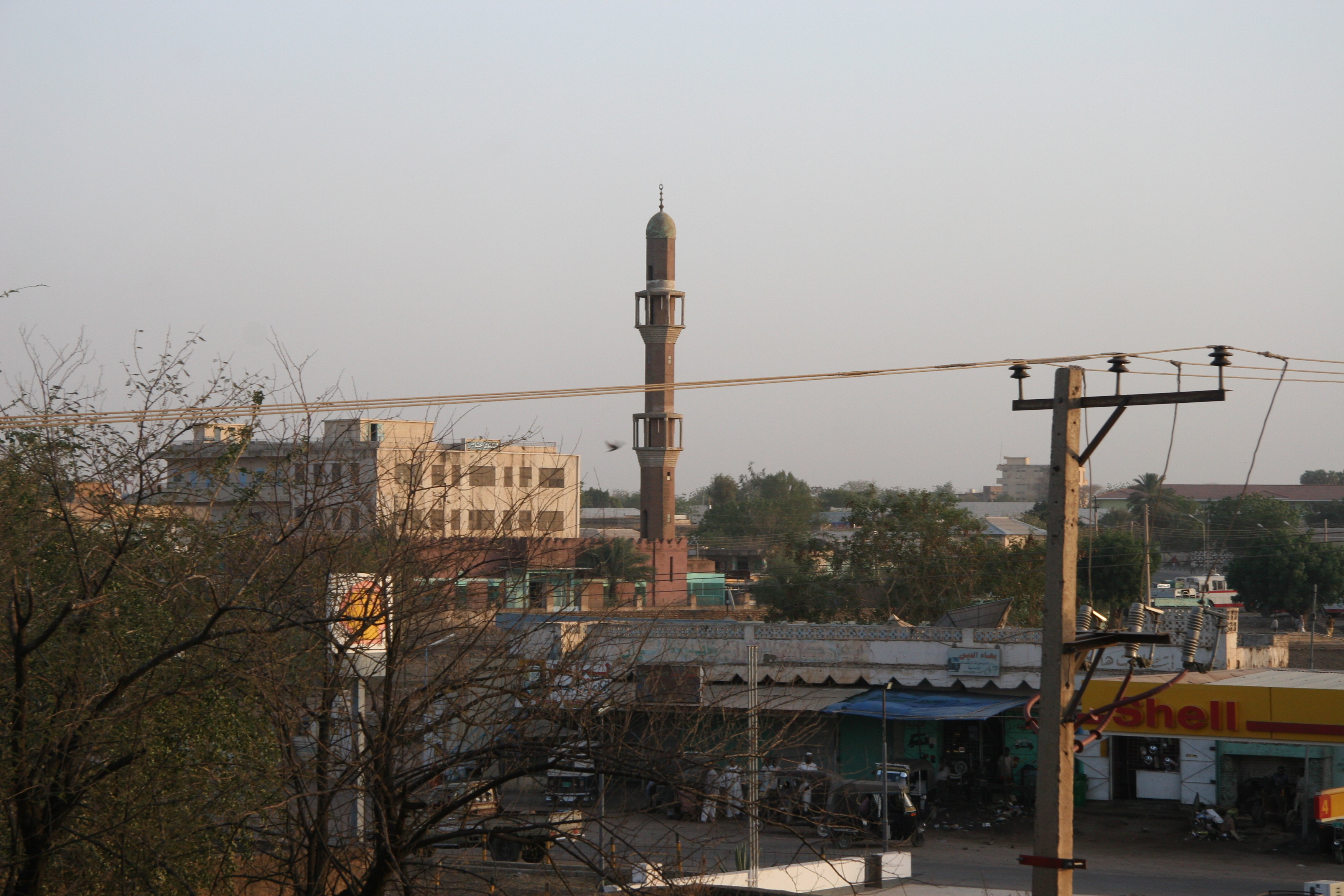
Adventurouspirits
Finally After checking to a hotel I asked the receptionist for the directions to a Toyota dealer. He understood just enough English to make sense of what I was requesting and instructed a young boy to go with me and direct me. After about an hours drive I found myself way out in the desert in the middle surrounded by tin shacks. It was Gedaref’s industrial area and once again I found myself in the hands of a very capable African mechanic.
Enlarge
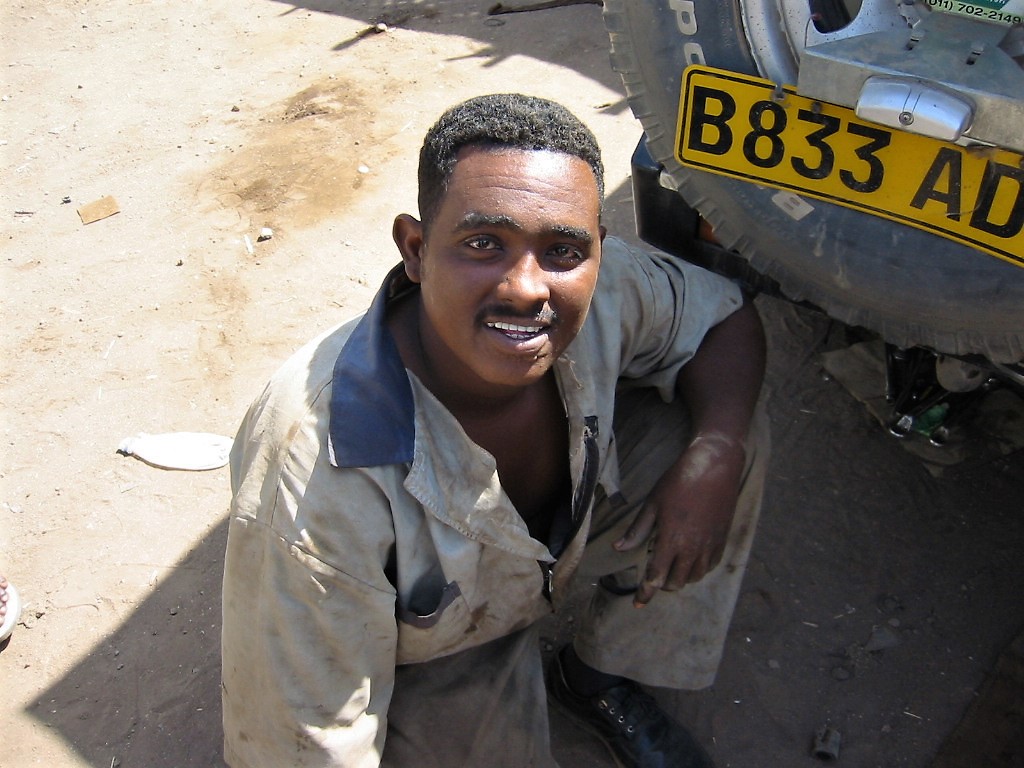
Adventurouspirits
The rear differential gasket is done.
Enlarge
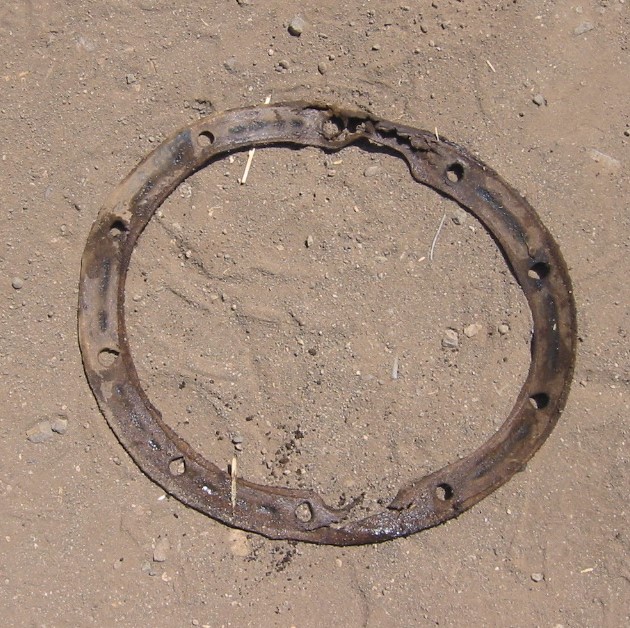
Adventurouspirits
A new handmade one was installed and the differential filled with fresh oil. These guys are miracle workers.
Enlarge

Adventurouspirits
The repair took 5-6 hrs during which time I had the opportunity to mix with curious onlookers. We chatted in broken English and my comments and their feedback was translated causing much amusement, amazement and nodding of heads. Auto shops in Africa, unlike in North America are great places for socializing. A smartly dressed man wandered over to request that I visit his workshop. He proudly showed how his skilled artisans were manufacturing presses to make oil from Linseed. Entrepreneurship is alive and well in Sudan.
Enlarge

Adventurouspirits
The road north to Khartoum from Gedaref was extremely busy, with numerous very long trucks ferrying goods to and from Port Sudan. Driving is both challenging and dangerous, but there was little to see so keeping one’s eyes on the road was not difficult. Khartoum is a large sprawling city, which appears to be enjoying something of an economic boom. It is one big construction site, probably due to the fact that Sudan is now a significant oil producer.
Enlarge

Adventurouspirits
At the National Camping Site in Khartoum., we were pleased to find Heidi and Kuhn, overlanders from Belgium who we had previously met in Nairobi. It was good to be with friends. Khartoum is perhaps best known as the place where the Blue and White Niles meet, but has little to offer tourists, so we decided that we would leave as soon as we felt ready to tackle the desert road to Wadi Halfa where we would catch the ferry to Egypt. Whilst preparing dinner a large (7ton) MAN truck pulled into the campsite and out jumped a couple from Germany, Henning, Anna, and their dog Aisha. We all agreed to travel across the desert in convoy. After discussing various routes, we decided that we would take the most direct route to Wadi Halfa. We would follow the Nile north via Dongola. We were pleased to have traveling companions for the trip and their dog Aisha would be fun and different.
Enlarge
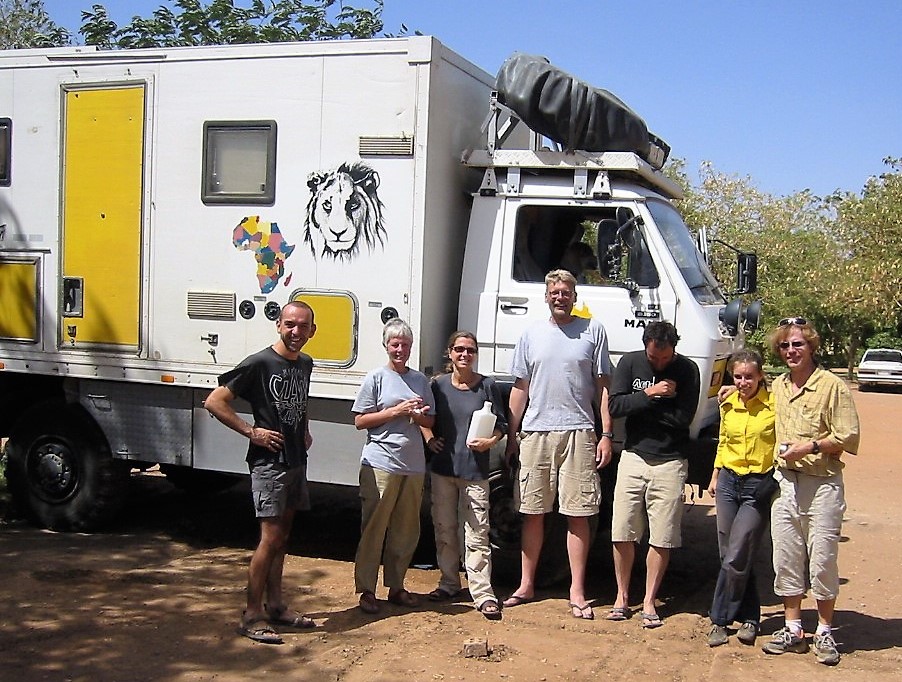
Adventurouspirits
Getting out of Khartoum the following morning turned out being a complicated affair. The city centre itself was completely choked with traffic and nothing was moving. Once again a large protest about the UN presence in the Darfur had turned city streets into a giant parking lot. Since all the banners and shouting was in Arabic, we had no idea as to what the issues were. But the crowd seemed friendly enough. Eventually we were staring at a strip of tarmac road, which sliced the red desert sands in half for as far as the eye could see. We were finally in the Sudanese desert heading towards Egypt. It was spectacular to drive through. We felt like we were flying over a Martian landscape. It felt strangely freeing and exhilarating, it was wonderful.
Enlarge
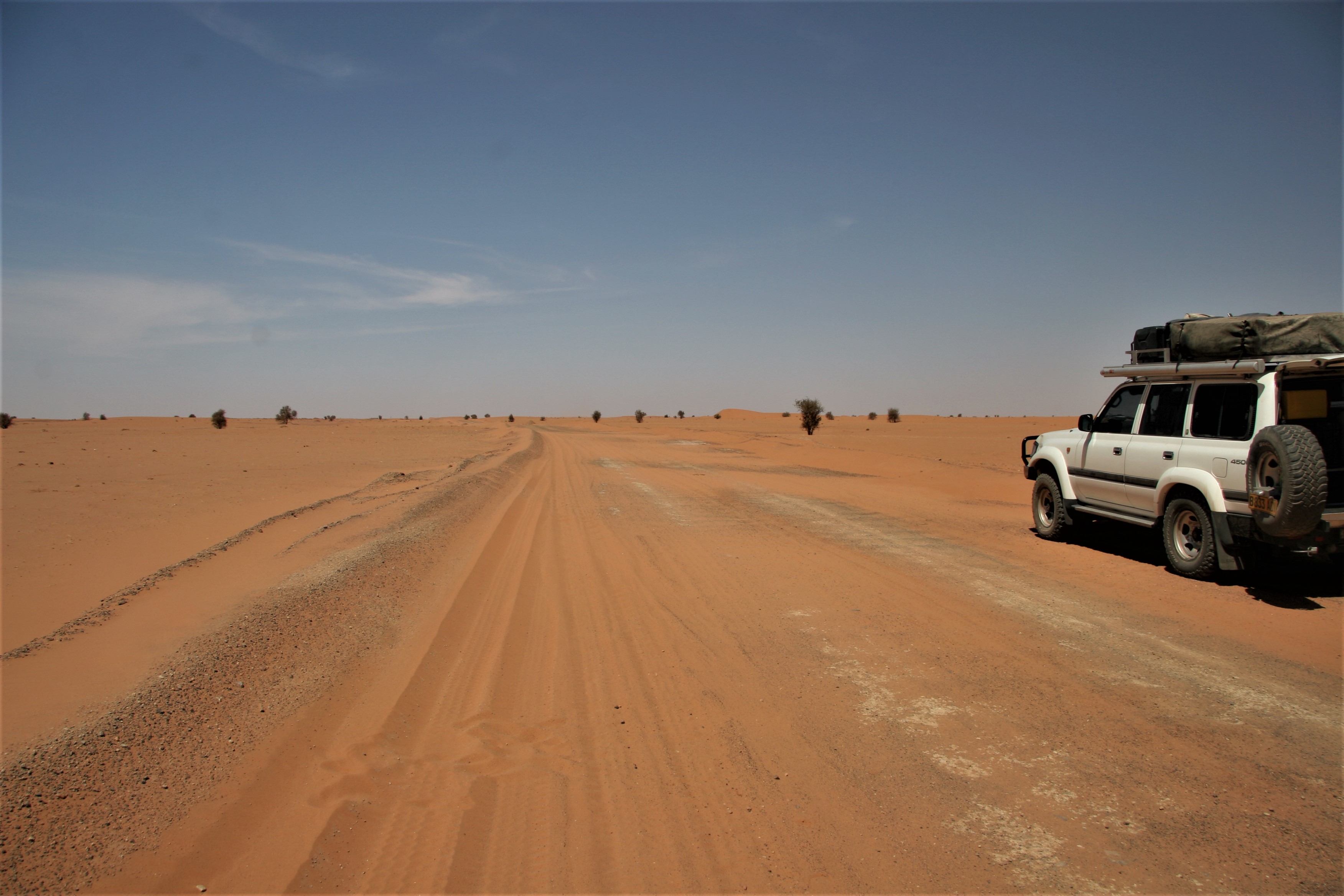
Adventurouspirits
Travelling with Hennie and hid MAN truck allowed us to relax and enjoy the desert experience. There is safety in numbers, we could help each other out as need be. Often we found that his heavy vehicle would sink into the deep sand and we would have to assist him getting out.
Enlarge
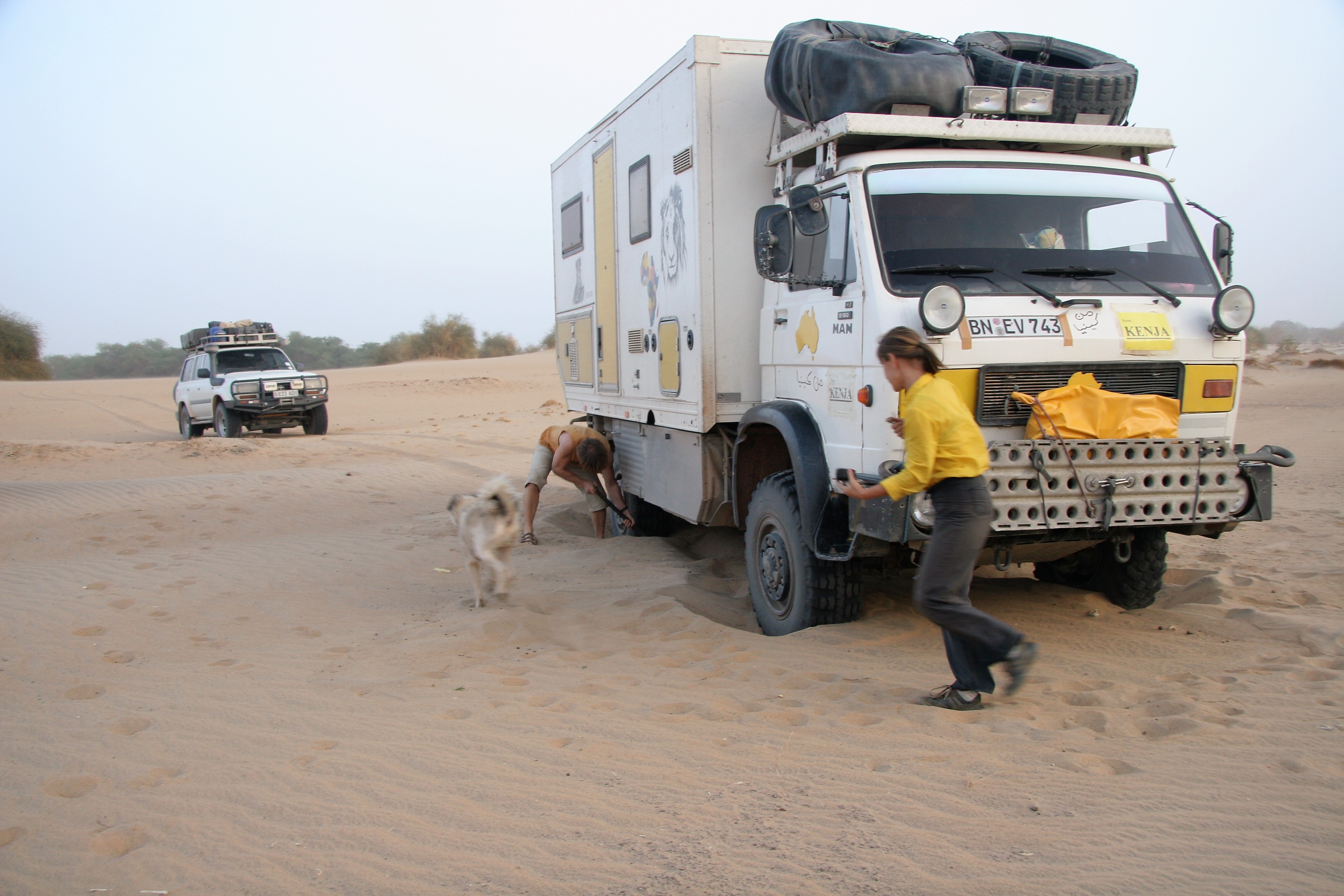
Adventurouspirits
Janet is a serious dog lover ad she missed her dogs back in Calgary tremendously, so having Aisha along for the ride was a real treat.
Enlarge

Adventurouspirits
We passed many Sudanese villages and homes along the Nile. The Nile provides life sustaining water to the desert inhabitants. The Nubian style villages had enclosed courtyards to protect the interiors from the blowing winds and they seemed strangely deserted since the inhabitants were mostly closeted in their courtyards.
Enlarge
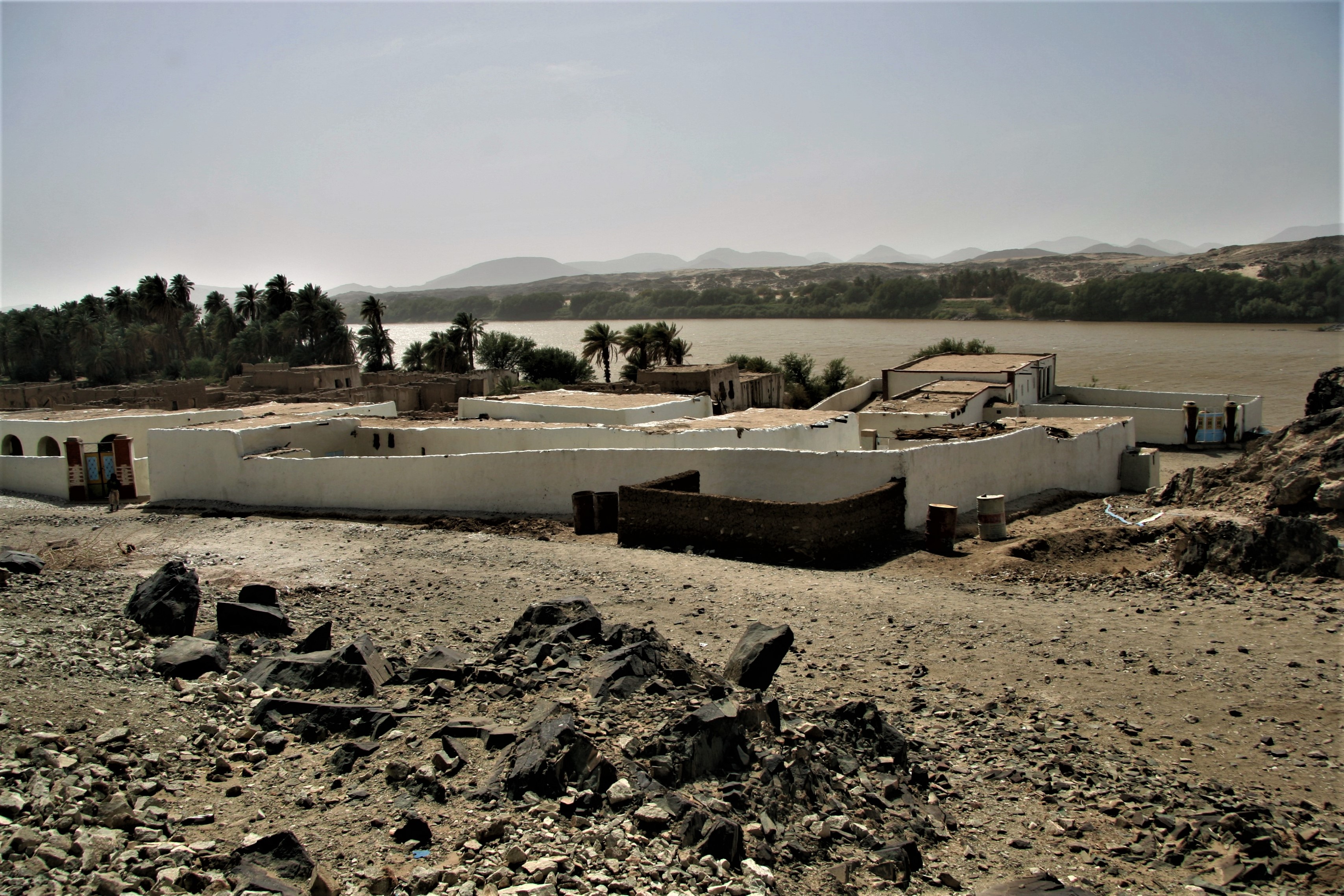
Adventurouspirits
At Dongola the desert track is on the Eastern side of the Nile so we had to catch one of the local ferries.
Enlarge

Adventurouspirits
The desert corrugations has damaged Hennie’s truck suspension so he had to travel very slowly. We would travel ahead at a speed which made travelling over the corrugations comfortable and then wait for him to catch up. The desert expanse and stillness was therapeutic.
Enlarge

Adventurouspirits
One morning after taking respite from a vicious sandstorm by sleeping in Hennie’s camper, I awoke to find that the brakes that I had had repaired in Zambia had gone again. Africa was testing us. It would be slow driving across the Sahara.
Enlarge
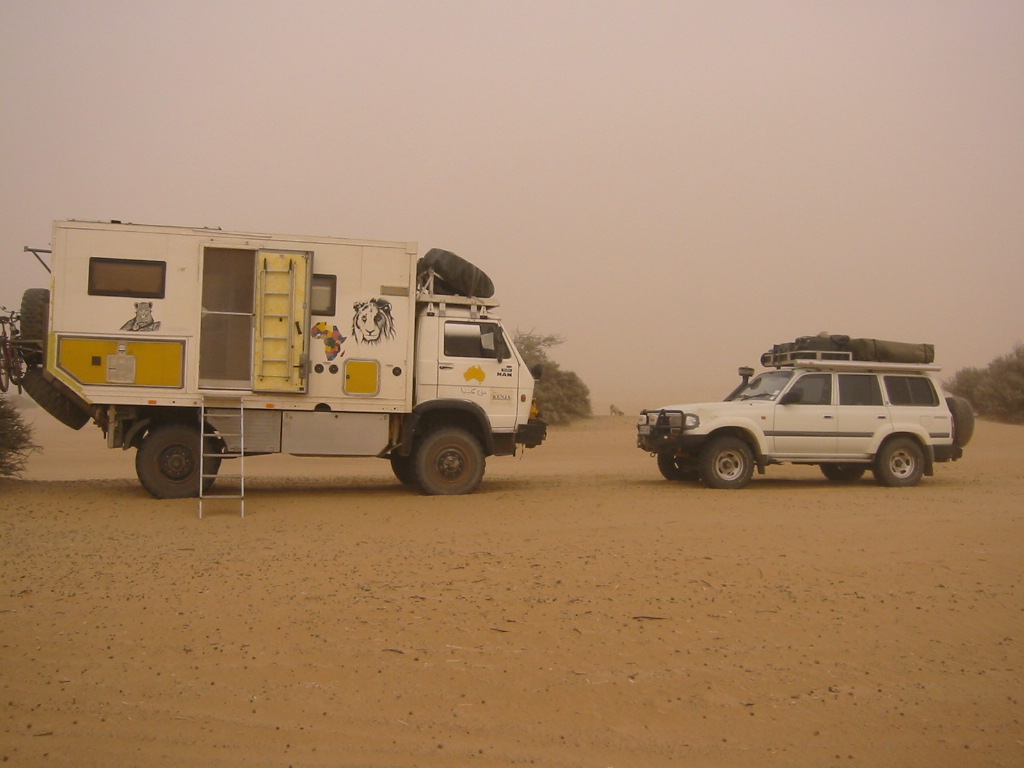
Adventurouspirits
As we got deeper into the desert and further away from water we noticed that the Sudanese alway left a full water urn for travellers to drink from to quench their thirst. These urns were made from a porous medium which allowed some of the water to leak through and evaporation then kept the water inside the cool.
Enlarge

Adventurouspirits
Some of the villages had water wells which they gladly invited us to use to fill up before proceeding.
Enlarge
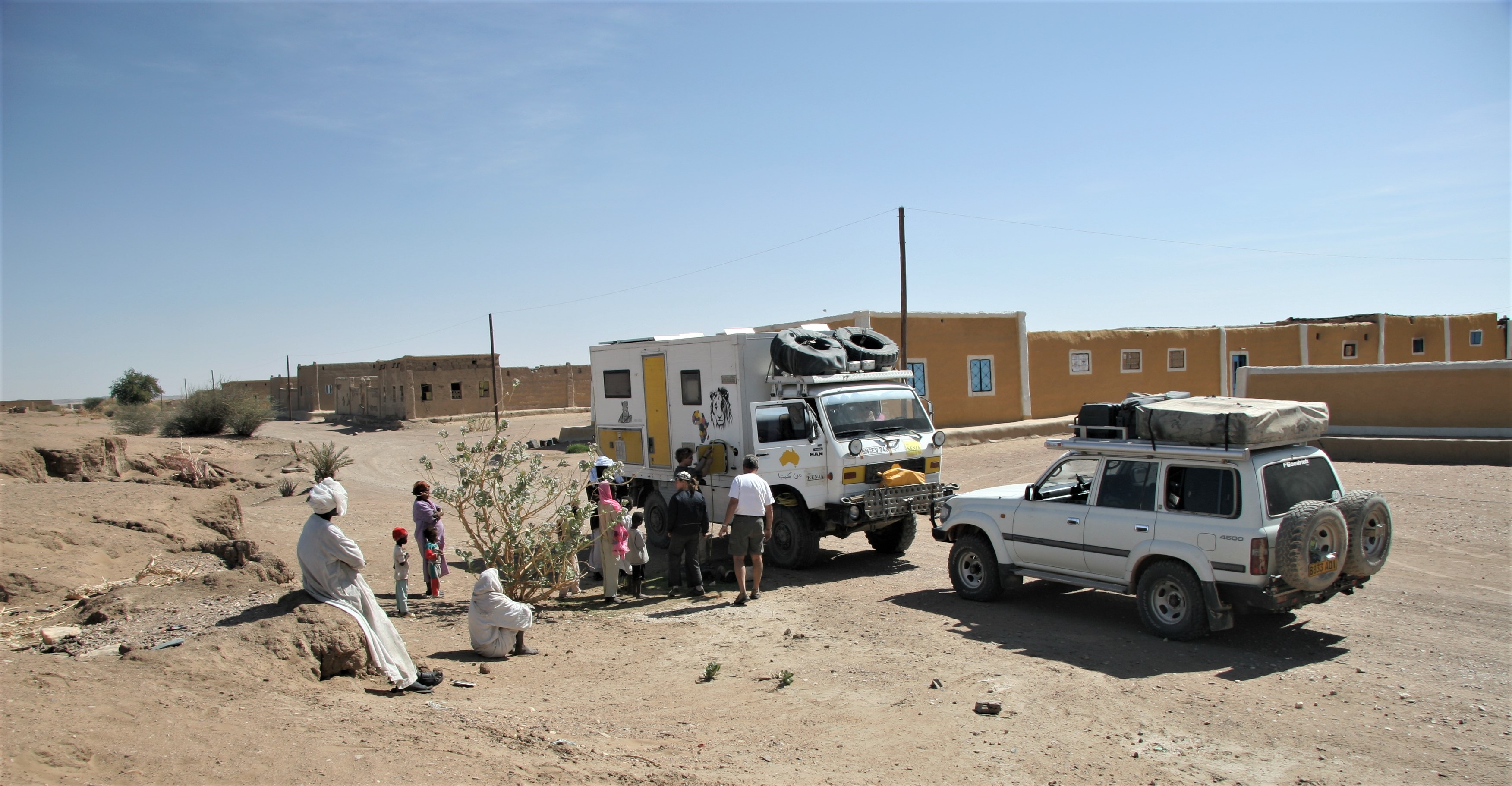
Adventurouspirits
Enlarge

Adventurouspirits
We camped amongst the dunes and enjoyed the clear starry desert nights, the crimson sunsets and the gentle dawns.
Enlarge

Adventurouspirits
Enlarge

Adventurouspirits
Often curious Sudanese children would sit quietly around us, observing our every move and then slip away as if they had been a mirage. One group of children who engaged us found themselves getting an English counting lesson from Janet. They were probably hoping for some treats but they were keen and thrilled with their success of now being able to count to ten in English.
Enlarge

Adventurouspirits
I’m beginning to blend in.
Enlarge

Adventurouspiruts
The drive to Wadi Halfa through the Sahara was intense but pleasant. We enjoyed Hennie’s and Anna’s company, the constantly changing landscape and the Nile river as our guide. Travelling through the desert you truly feel small and insignificant. It is very freeing.
Enlarge
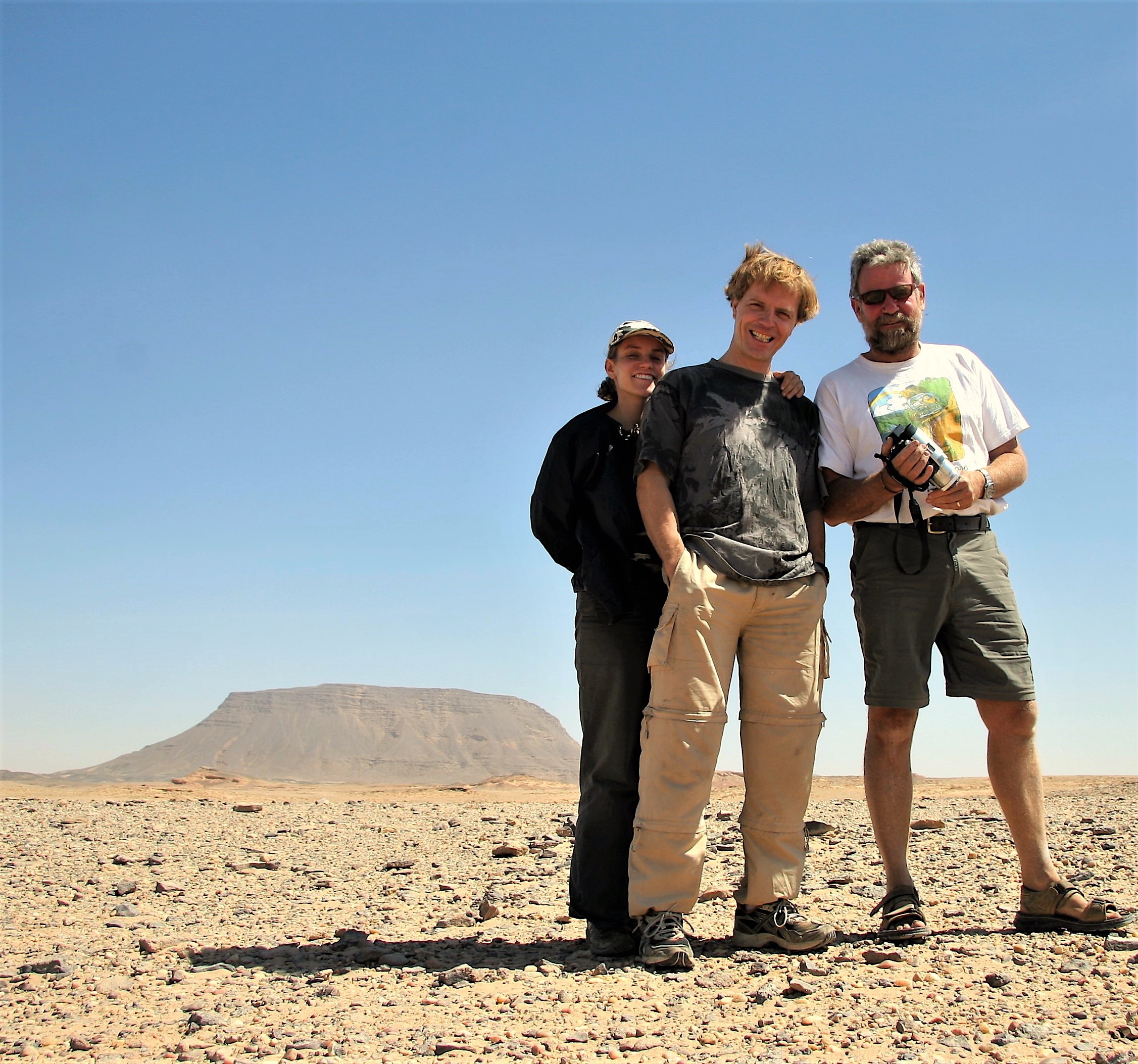
Adventurouspirits
Enlarge

Adventurouspirits
Enlarge
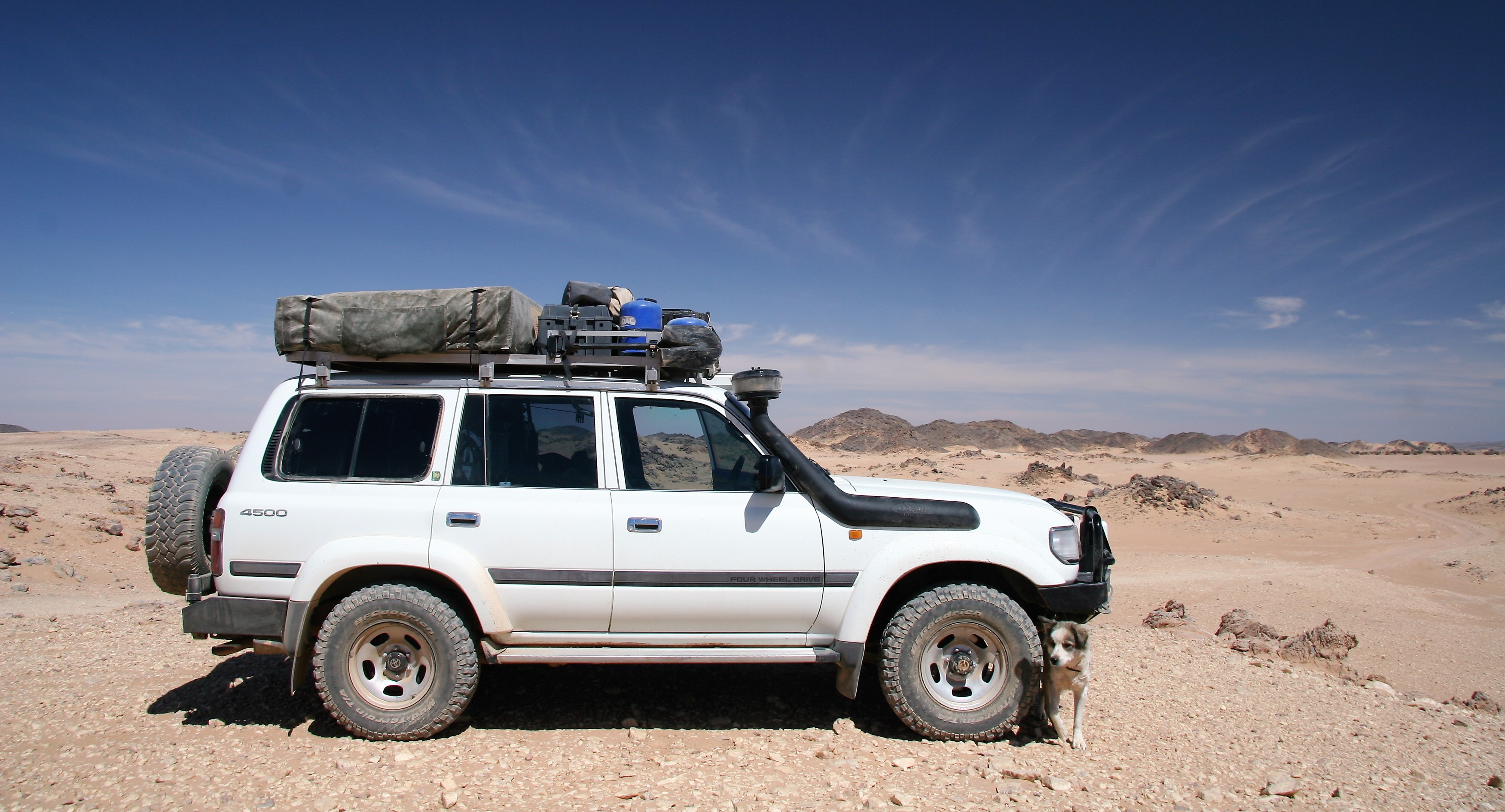
Adventurouspirits
It is difficult to describe the majesty of the Nile river. We had seen both its sources at Jinja in Uganda (White Nile) and at Lake Tana in Ethiopia (Blue Nile), but seeing the river here in the middle of a sea of sand made it all the more spectacular. It is wide and powerful and supports many villages and communities along its journey to the Mediterranean. I really grew to love this ribbon of life as we drove its banks. It was like having a shoulder to lean on. Often we would be travelling down roads where one side of the vehicle was sandy and barren and the other lush green fields of wheat, fodder and other crops.
Enlarge

Adventurouspirits
Enlarge

Adventurouspirits
After five days of rough desert travelling, the blue sparkling waters of Lake Nasser came into view. The sight of so much fresh water in the middle of the desert takes ones breath away. The lake is approximately 400kms long and was built by the Egyptians with Russian financing in 1967, and the small Sudanese village of Wadi Halfa lies on its western shore. The dam’s main purpose is to control the annual Nile floods and generate hydroelectric power. The dam has caused all kinds of environmental problems, buried countless Egyptian temples and displaced thousands of Nubian people, but it is still very impressive. The significance of the dam to overlanders is that travelling by boat up its length is the only way to cross into Egypt from the Sudan. There is no passable Sudan and Egypt land border crossing.
Enlarge

Adventurouspirits
Wadi Halfa is where we have to arrange for a barge to ship us and our vehicles to Aswan in Egypt. We seek out an agent who can help us. After asking around we are recommended to use Mashan.
Enlarge

Adventurouspirts
He invites us to his house to start the negotiations. We like him and trust him to give as good service so we agree to use his company to get us on a barge so the we can get us to Aswan, in Egypt. Our last country. Cairo is almost in our sights.
Enlarge
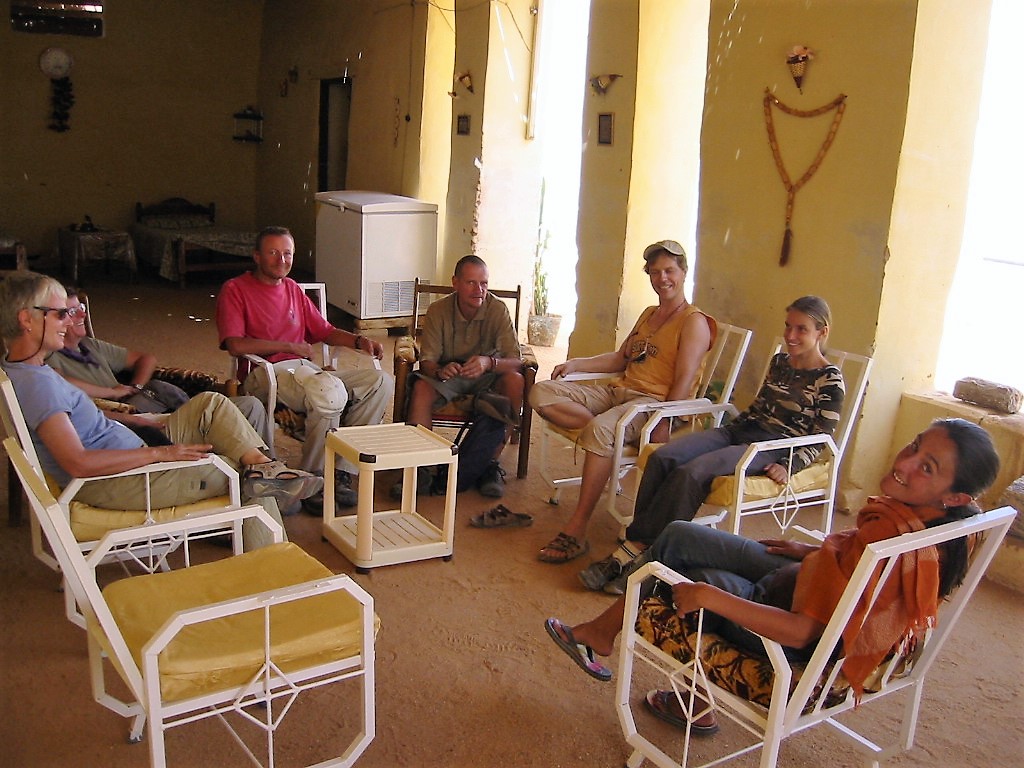
Adventurouspirits
He informs us that it will take at least 5 days before he can arrange one for us. So we head out of town to find a comfortable spot to set up camp fore a few days. We locate a spectacular location on the shores of Lake Nasser, the greens of the scrub contrasting beautifully with the yellow of the dunes and the blacks of the rocks. It is heaven. A fabulous placed to recuperate from our Ethiopian incident and intense desert crossing before tackling the next and final leg of our adventure.
Enlarge
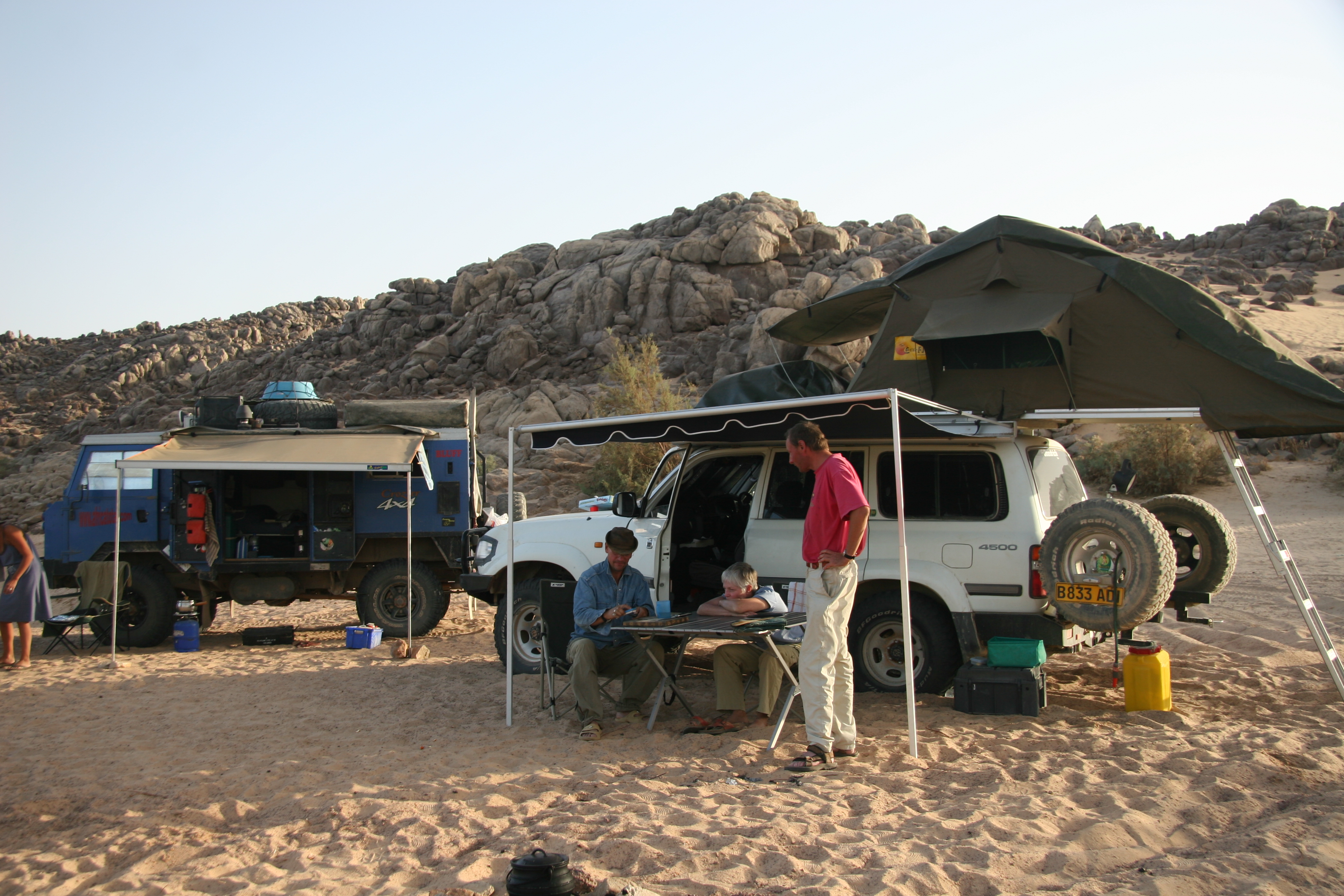
Adventurouspirits
Enlarge
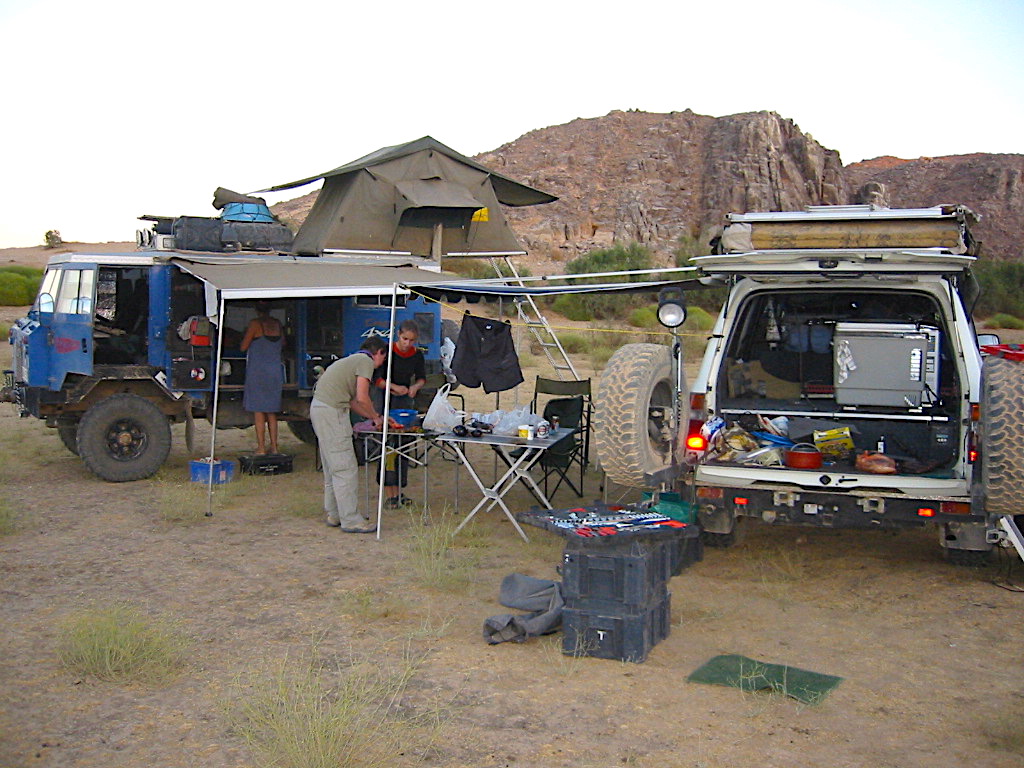
Adventurouspirits
The Sudanese fisherman offered to share their catch with us simply because we were guests of their country and this is their custom. They wanted nothing in return. We were deeply moved.
Enlarge

Adventurouspirits
Enlarge
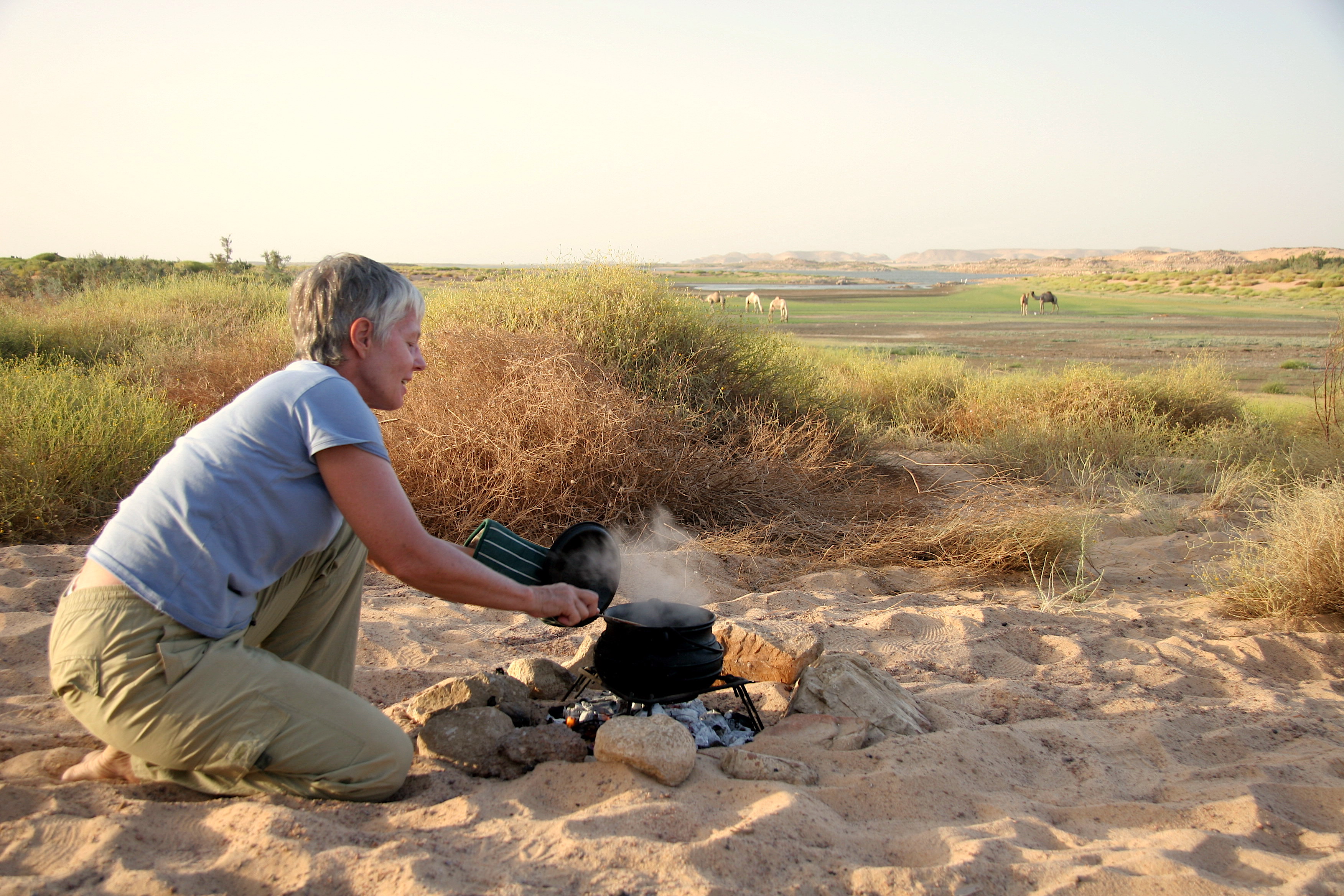
Adventurouspirits
This Camel trader paused on his journey to rest and feed his camels here and was surprised by our presence in this area.
Enlarge
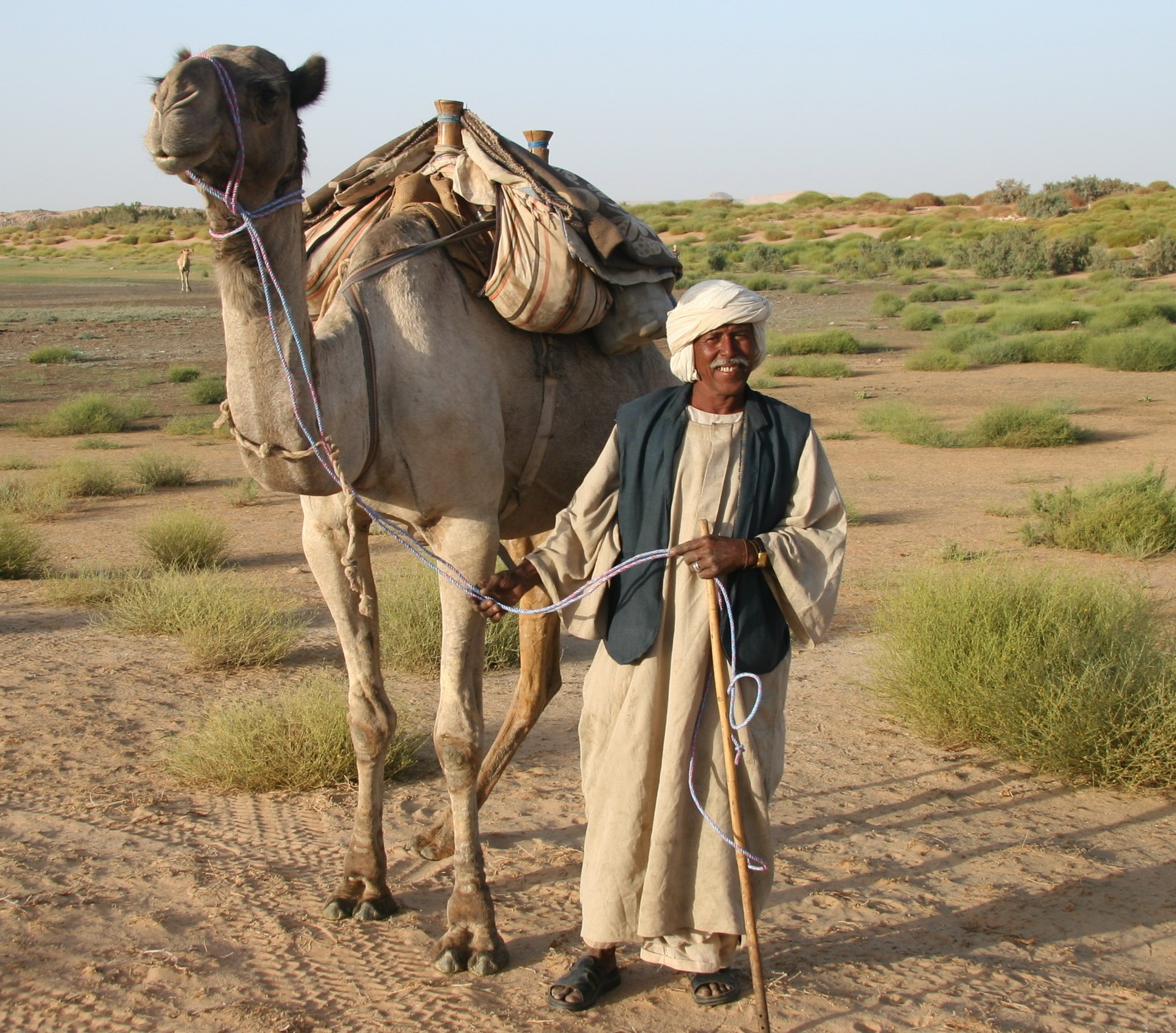
Adventurouspirits
Enlarge

Adventurouspirits
Finally the call came for us to pack up camp and head to his office and make preparations to board the barge which would take us to Aswan.
Enlarge

Adventurouspirits
Once accounts had been settled, $500 for each of the vehicles and $900 for Hennie’s truck, customs and immigration completed we headed onto the loading dock to see what we had hired. To say we were surprised was an understatement. It was a cement carrying barge which was clearly not designed to either load or carry vehicles. Oh well this is Africa and you make do with what you have.
Enlarge
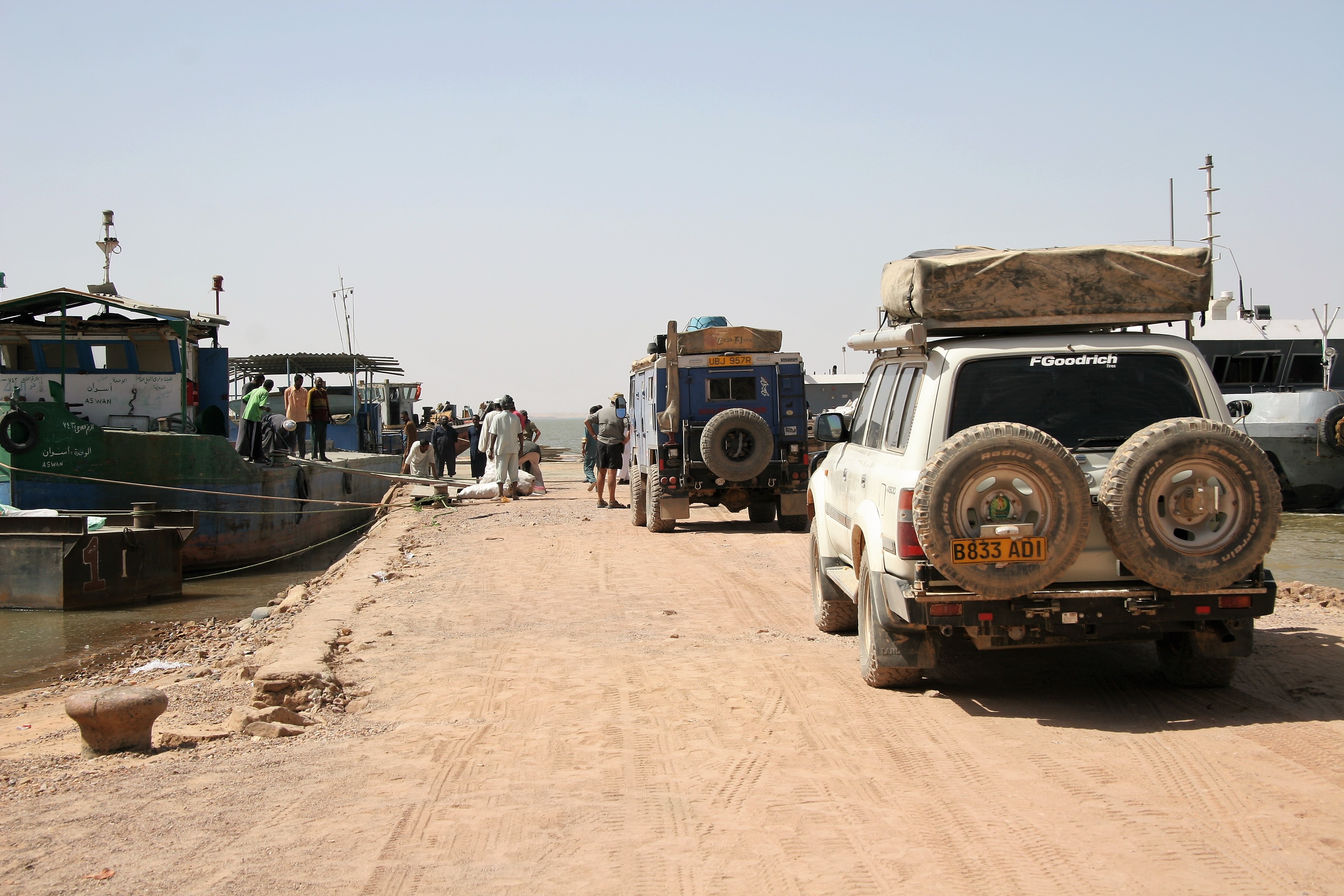
Adventurouspirits
I agreed I would go first.
Enlarge
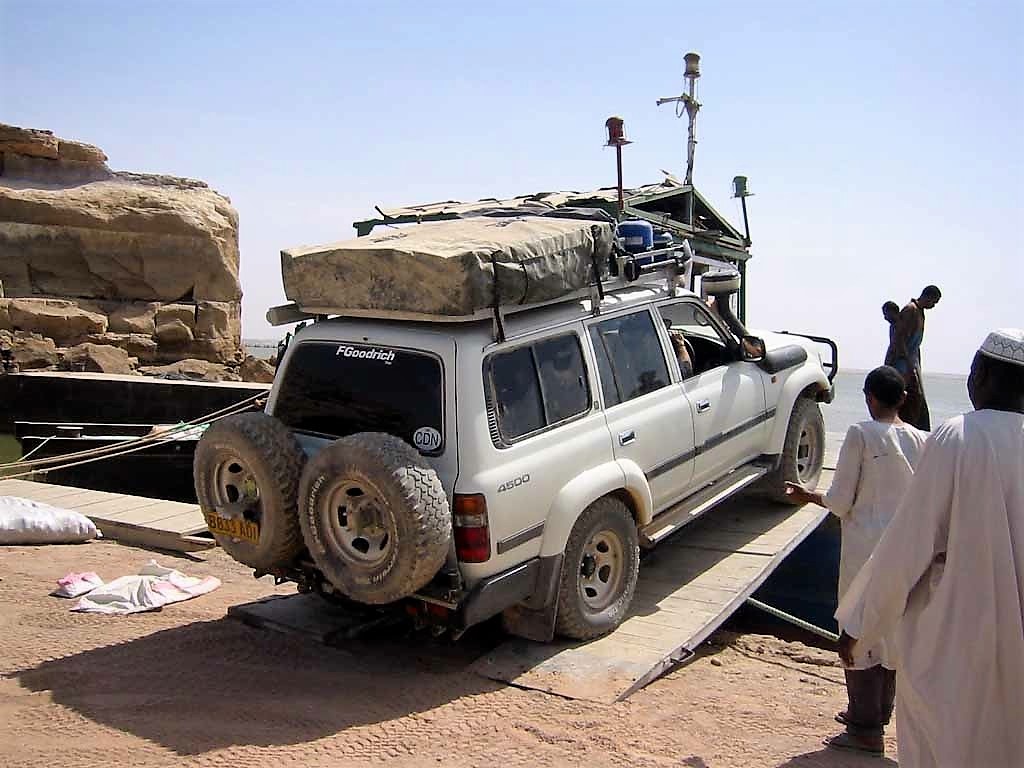
Adventurouspirits
Mark was next with his Landrover forward 101
Enlarge
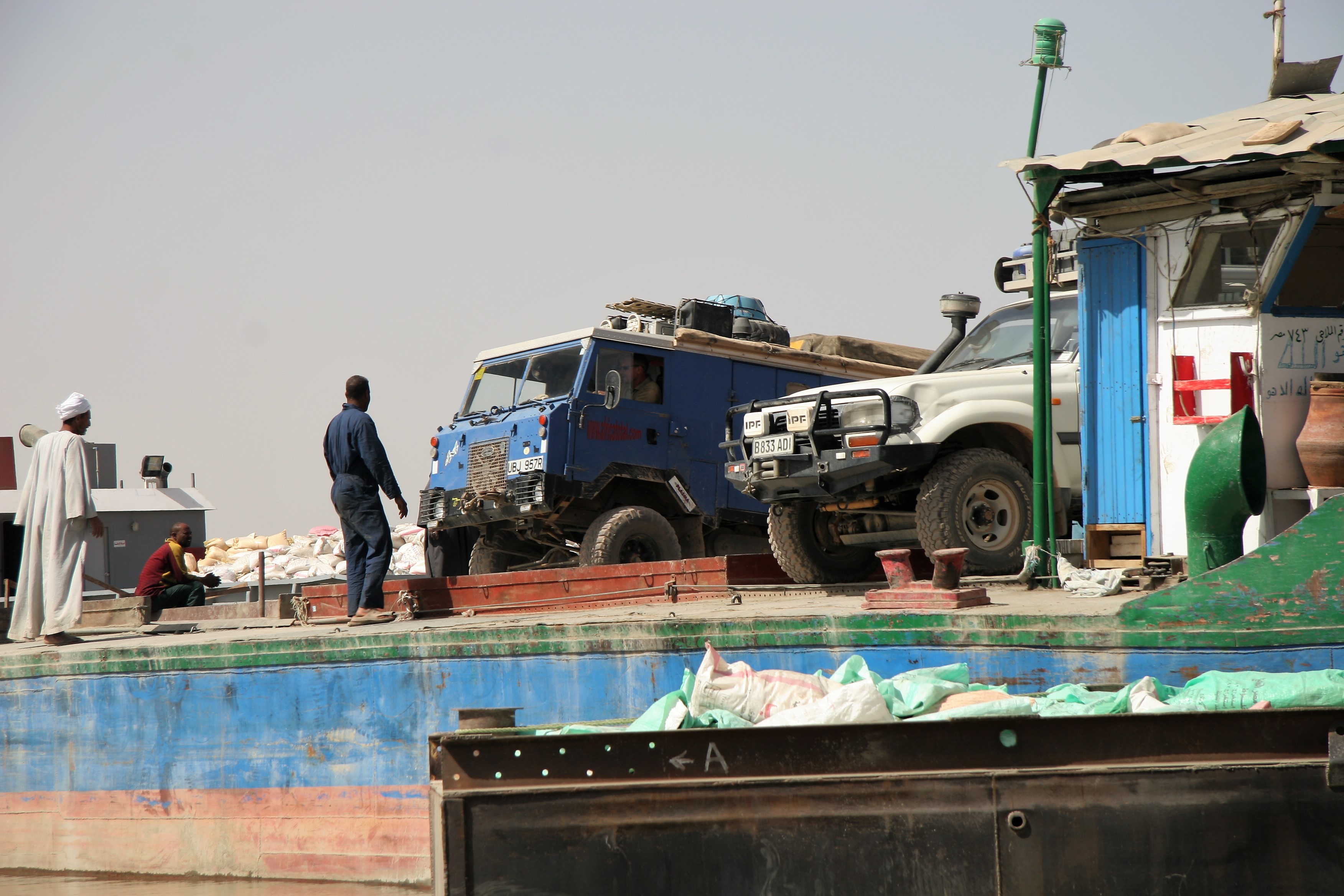
Adventurouspirits
The cruiser seems content and happy to take a break as well.
Enlarge
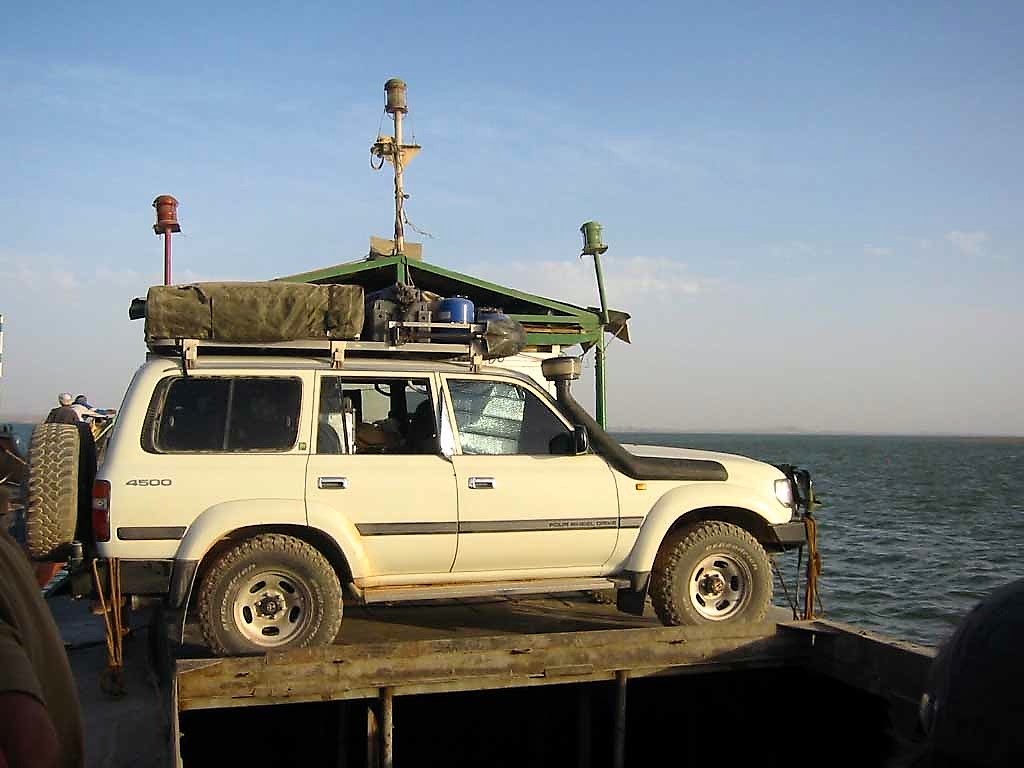
Adventurouspirits
Enlarge

Adventurouspirits
Enlarge

Adventurouspirits

wonderful country and wonderful people. Sudan is an explore country but i visited one year ago and i want to travel again.
Hello! i would love to make a cairo to cape travel but i have no idea how to get a car in Egypt from Europe, i would appreciate any advice, thanks!
santi.berruti@hotmail.com
Hi sorry for late reply.
It’s complicated. You need to get a “Carnet de Passage” from your local automobile association. That document can be presented to Egyptian customs and they will the process your vehicle.